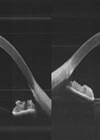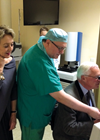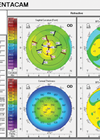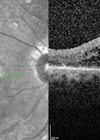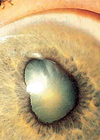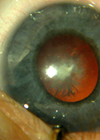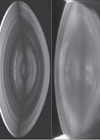Ophthalmology
High quality retinal image grading and management service by the NetwORC UK
In 2004 a network of three ophthalmic reading centres in Belfast, London and Liverpool (known as NetwORC UK) was established to form the largest reading centre in Europe for the purpose of providing high quality grading of ophthalmic images for...
A closer look at the new wave of glaucoma surgery – radical or old school?
Glaucoma is a challenging condition to treat because the exact pathophysiology remains unclear and the only readily modifiable factor is the intraocular pressure (IOP). Additionally, most glaucoma patients are completely asymptomatic, yet are often subjected to lifelong medical therapy. The...
Optical coherence tomography – reinventing the eye examination
It has been 25 years since Huang et al. presented the first optical coherence tomography (OCT) images in Science [1]. With vast improvements in OCT technology over the years, it is now possible to acquire high-resolution cross-sectional images of the...
The David J Apple International Laboratory for Ocular Pathology – a legacy of pioneering IOL research
David Apple and Gerd Auffarth. The Apple Lab at the David J Apple Center for Vision Research in Heidelberg is a thriving international laboratory for research into intraocular devices. The lab continues the work of David J Apple, a world-renowned...
Embedding EMR for a complete transformation in user experience
Informatics and IT projects in the NHS have a history of being over budget, delivered late and not fulfilling the design brief. “But it doesn’t have to be that way,” believes Chris Canning, Consultant Ophthalmologist and Chief Clinical Information Officer...
Surgical options for the treatment of hyperopia
The modern refractive surgeon has a variety of options available to treat patients with hyperopia who wish to be independent of spectacles and contact lenses. Unlike in low myopia where presbyopic patients may have the ability to see well for...
Specialty-driven EMR for paperless clinical environment – insights for an informed choice
Deployment of specialty-driven (or specialty-specific) electronic medical record (EMR) systems across UK ophthalmology units appears to be growing rapidly at the expense of generic, multiuse digital technology packages. Experience further suggests that open source systems can play a significant role...
Management of diabetic macular oedema in vitrectomised eyes
Diabetic macular oedema (DMO) is one of the leading causes of blindness; its prevalence is on the rise with progressive increase in numbers of people suffering from diabetes. The management of DMO has evolved significantly over the past few years....
Principles of management
Whatever section of pathology is to blame and wherever it strikes, the aim of treatment is always the same. Find the cause if you can. Establish the effects of the cause. Halt the pathological process if you can. Reverse its...
A revolution in modern genetic testing for the clinical management of ocular disease
Recent years have seen a huge increase in our understanding of the genetic factors underlying a wide variety of eye diseases. This has included common conditions such as glaucoma and age-related macular degeneration, as well as those conditions which have...
The refractive index in the eye lens – implications for clinical practice and optical design
The eye may appear to be a comparatively simple organ and yet its optical system is complex and continues to be a source of investigation and research. The major optical elements are considered to be the cornea and the lens...
Surgical treatment of high myopia
Although several excellent modalities are available for correcting high myopia, the surgical treatment of this condition remains one of the biggest challenges for refractive surgeons; this group of patients is often very dependent on contact lenses. If these patients become...




